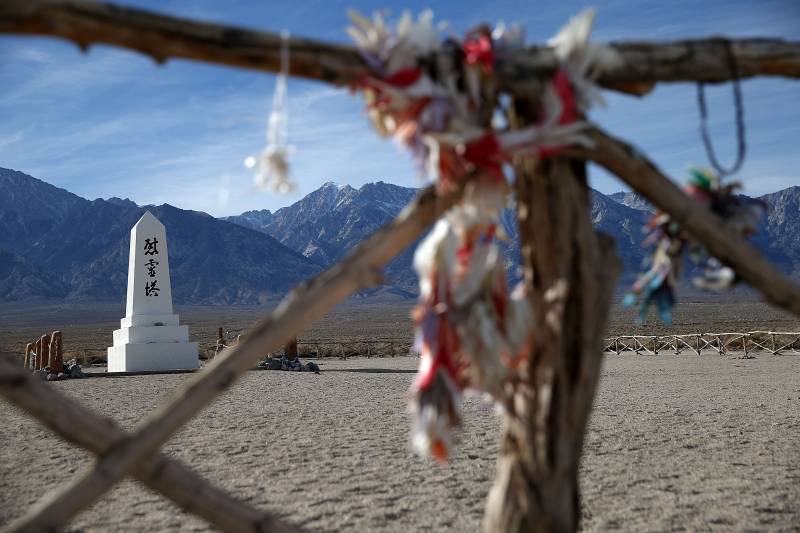The forced removal and imprisonment of substantially the entire West Coast Japanese population during World War II tore up the lives of more than a hundred thousand people. It also ripped holes in the urban fabric, at exactly the time when the West Coast began to experience an influx of Black Americans from Texas, Louisiana, Arkansas, and other parts of the south. These shifts had a huge effect on San Francisco, the Bay Area as a whole, and the entire West Coast. We’ll talk with two historians about the lasting marks that internment left on our cities. But first, 102-year-old Yae Wada shares her story of being forced to relocate from her home in Berkeley to a prison camp in Utah.
How Japanese American Incarceration During WWII Reshaped San Francisco

A monument honoring the dead stands in the cemetery at Manzanar National Historic Site. (Justin Sullivan / Getty Images)
Guests:
Yae Wada, 102-year old Berkeley resident; imprisoned during WWII in the Tanforan Assembly Center and the Topaz concentration camp
Meredith Oda, associate professor of history and associate chair of the department of gender, race, and identity, University of Nevada, Reno; author, "The Gateway to the Pacific: Japanese Americans and the Remaking of San Francisco"
Charlotte Brooks, professor of history, Baruch College, City University of New York; author, "Alien Neighbors, Foreign Friends: Asian Americans, Housing, and the Transformation of Urban California"
Sponsored